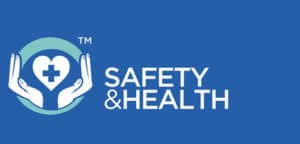 The definition of safety leadership often confuses people because the terms ‘leadership’ and ‘management’ are often thought of as synonymous. In fact, managers are part of an organisation’s structural hierarchy and so their role is to formally control their subordinates. In contrast, a safety leader sets and monitors the standards of safe behaviour within their organisation in order to effect positive change and influence co-workers.
The definition of safety leadership often confuses people because the terms ‘leadership’ and ‘management’ are often thought of as synonymous. In fact, managers are part of an organisation’s structural hierarchy and so their role is to formally control their subordinates. In contrast, a safety leader sets and monitors the standards of safe behaviour within their organisation in order to effect positive change and influence co-workers.
Safety leaders can be found at all levels of an organisation, from senior executives, through to middle level such as site managers, and on to front-line supervisors.
However, it’s likely that senior management is not aware of, or the most conversant with the dangers of a specific task or job. Rather, their role is to ensure that the workforce is aware that safety leaders will exhibit and explain the actions that keep everyone protected from workplace threats and hazards. Safety leaders do not rule by authority; instead, their conduct influences co-workers to improve their own standards.
In the past, safety management has been driven from the top, with a tendency for it to become stuck at the front-line management level. This means that those workers most likely to engage in unsafe behaviour or to be injured have traditionally been unconnected from the safety improvement process.
Safety leadership overcomes this by working with those most likely to be hurt. The leaders become actively engaged in working to eliminate the incidences of unsafe behaviours. Without a widespread workforce involvement, any commitment to safety management will be ineffective.
Anyone in an organisation can make the choice to be a safety leader. In reality, for an organisation to have a strong safety culture and performance, there must be safety leaders at every job site, every department, and in every work team. Their behaviour will influence co-workers by:
- Their attention to the rules
- Demonstrating constant awareness of the dangers of the job
- Reporting all safety hazards, violations, and incidents
- Communicating with management and co-workers about safety concern
- Helping to implement change to improve safety and working conditions
- Encouraging and expecting co-workers to practise safe behaviours
- Expressing appreciation for a safe job well done
- Keeping co-workers aware that unsafe behaviour and rule-bending is unacceptable
- Being involved in safety initiatives and committees
Research shows that a safety leader’s effect on company culture is critical for the prevention or minimisation of a disaster. In order to achieve efficient process safety, any organisation must attend to the following:
- Anticipate, recognise and act on any weaknesses that have the potential for disaster.
- Ensure the right questions are asked and accurate analyses are carried out.
- Implement and use systems as they are designed to be used with regard to safety.
- Encourage all workers to show willingness to intervene when issues are small and so prevent them from becoming unmanageable.
These four basics must be developed and maintained over time, often when conflicting priorities seem more urgent. It’s important to recognise that effective safety leaders do not themselves have to be safety experts, but they must know when to ask the right questions and assess information. To do this, they should have good communication and feedback skills, credibility and effective collaboration. And, of course, the ability to influence people.
It’s important to create a sustainable safety culture that gives any workforce the right skill sets, mind-sets and tools, rather than by paying lip service by setting more rules or paper trails in place. Safe Work Australia suggests the following ways for management to engage and consult in a two-way process:
- Talk to each other about health and safety matters.
- Listen to their concerns and raise yours.
- Seek and share views and information.
- Consider what your workers say before you make decisions.
- Share relevant work health and safety information with workers.
- Give workers a reasonable opportunity to express their views and raise health or safety issues.
- Give workers a reasonable opportunity to contribute to the decision-making process relating to the health and safety matter.
- Take account of workers’ views.
- Tell workers about the outcomes of any consultation and in a timely matter.
Management should support the above processes and decisions made by safety leaders and empower them to guide the workforce to strong safety performance.
Western Australia’s Department of Mines, Industry Regulations and Safety suggests the following strategies to further develop safety leadership:
Encourage all levels of the management team to show their commitment to a safe workplace through their actions as well as their words. Ways to do this include:
- chairing safety meetings
- taking responsibility for maintaining the safety management system (SMS) by participating in risk assessments and incident investigations to ensure the system is reviewed and updated as required
- being involved in reviews and training
- taking time to talk with work teams in both formal (e.g. site inspections) and informal (e.g. lunch breaks) settings about their safety and health experiences
- setting an example at all times by paying attention at inductions, following all safety procedures, asking when unsure, and using the correct personal protective equipment (PPE) and clothing
Encourage people to take personal responsibility for safety by consulting with site groups such as senior, middle and front-line management, and workers to set commonly accepted safety and health expectations linked to clear goals within the control of that group.
- Raise awareness and promote the exchange of ideas by
- providing safety leadership training so that safety leadership becomes a corporate value
- providing appropriate risk management training so that leaders are more knowledgeable about safety and health on their operations, and have a common language with line management.
Safety leadership is more than a way to prevent and mitigate untoward events. There are also well-known documented benefits that spring from efficient safety leadership. These may not be immediately obvious to the organisation. Have you considered the following advantages of an excellent safety culture?
- The organisation’s reputation and standing is improved amongst clients and suppliers.
- Business continuity is improved due to avoidance of incidents, accidents, breakdowns and process failures.
- Lost time, frequency of minor injuries, ‘near misses’ and property damage are all reduced.
- Less time is spent recording and investigating incidents.
- Insurance premiums may be reduced.
- There is an improvement in the workforce’s safety behaviour (by an estimated 85%.)
- The organisation has a better overall economic performance.
So how does an organisation ensure a robust risk or safety management system? What procedures should be included? Consider these aspects of systems and monitoring:
- Preventive maintenance
- Operation procedures
- Inspections
- Permit-to-work systems
- Safety talks
- Safety committees
- Risk assessments
- Near-miss reporting
- Training
- Management of change
- Risk management plans
Encourage people to take personal responsibility for safety by setting expectations for each layer (senior, middle, front-line management, and employees) and link these to the organisation’s goals. Safety leadership should become a corporate value: emphasise this with safety leadership training.
Ensure that the organisation does not foster a ‘blame the victim’ culture. Incidents and near-misses are unlikely to be reported when there are negative connotations for those involved. If the workforce trusts the system, individuals will be more likely to report accidents, safety hazards, violations, and incidents. In fact, there is likely to be an increased rate of reporting of defects, unsafe conditions and unsafe practices as the improved systems become embedded in the organisational culture.
What are the important qualities a safety leader should have?
First, emotional resilience. The safety leader must be able to deal with stress and negativity. Without it, interpersonal relationships may become difficult or strained, and it may become difficult to convince others of the need for safe practices.
Conscientiousness means details will be attended to. At its extreme, however, the leader may become ground down in trivial details to the detriment of the bigger picture. Those who lack conscientiousness might have great ideas but lack the credibility to ensure they are followed through.
Compassion refers to the leader’s interest in, and sensitivity to, the needs and feelings of others. This attribute is motivating for others as long as it demands enough of them with regard to safety practices.
Finally, sociability, which includes warmth, outgoingness, assertiveness and a strong activity level. These leaders enjoy the company of others and so do not hesitate to communicate safety needs. At the other end of the scale, however, they may not be approachable or make themselves available to others when necessary
Becoming a safety leader is not always an easy choice, particularly when workplace safety has not previously been a priority for the organisation. There may be resistance, opposition or any of a raft of non-compliant behaviours. When faced with such challenges, safety leaders must stand their ground and work smarter with a ‘never give up attitude’ apparent to the resistors. The best safety leaders develop their practices over time, learning from others along the way. Resistance is often part of the learning curve.
Safety leadership can be a challenge at times. But as long as the leader continues to push, he or she will continue to influence the workforce and ultimately, the industry.
Click on the icons below to find out about Safety & Attitude and Safety & Health.



